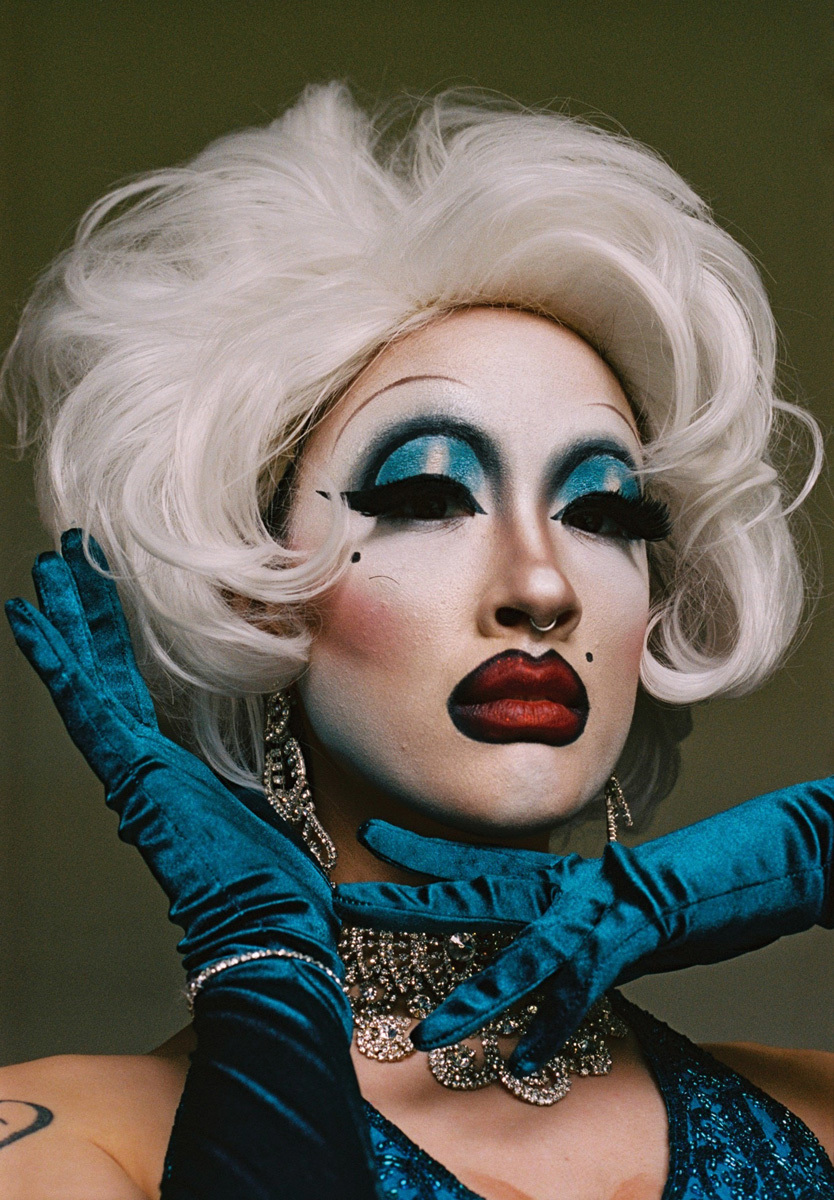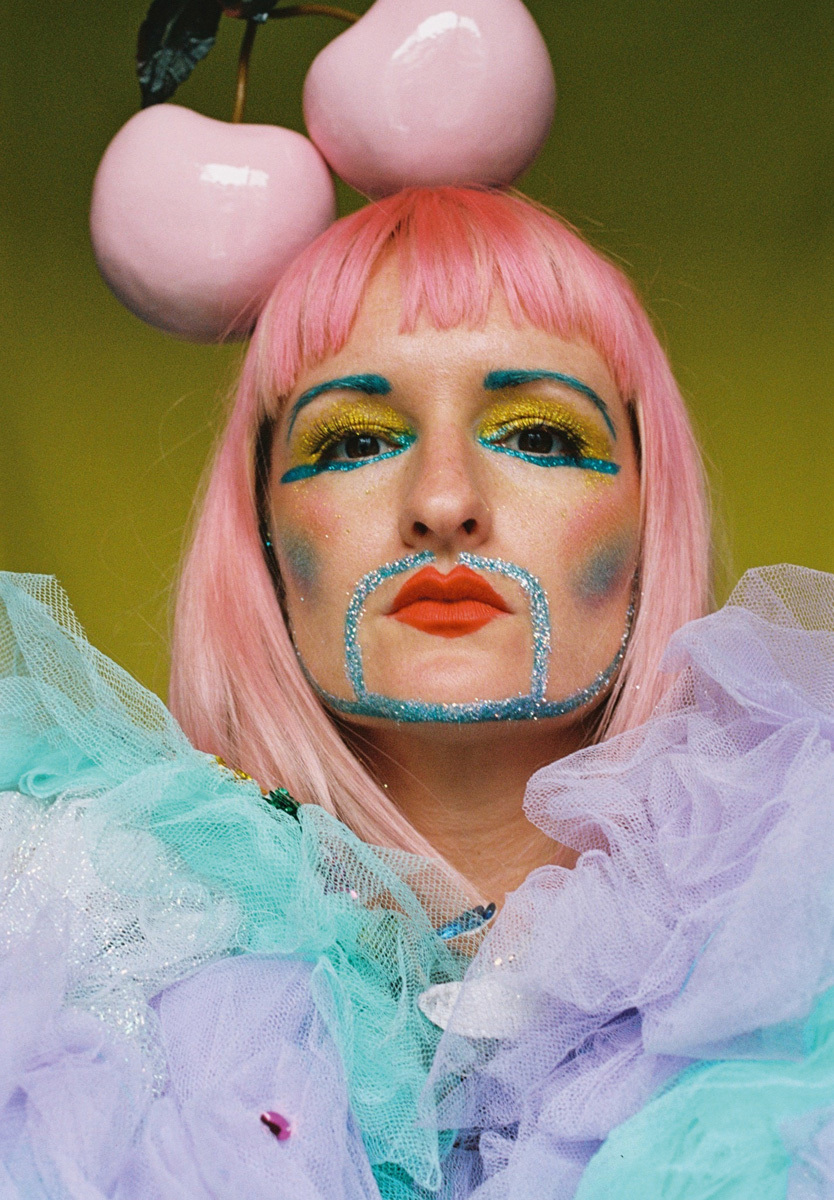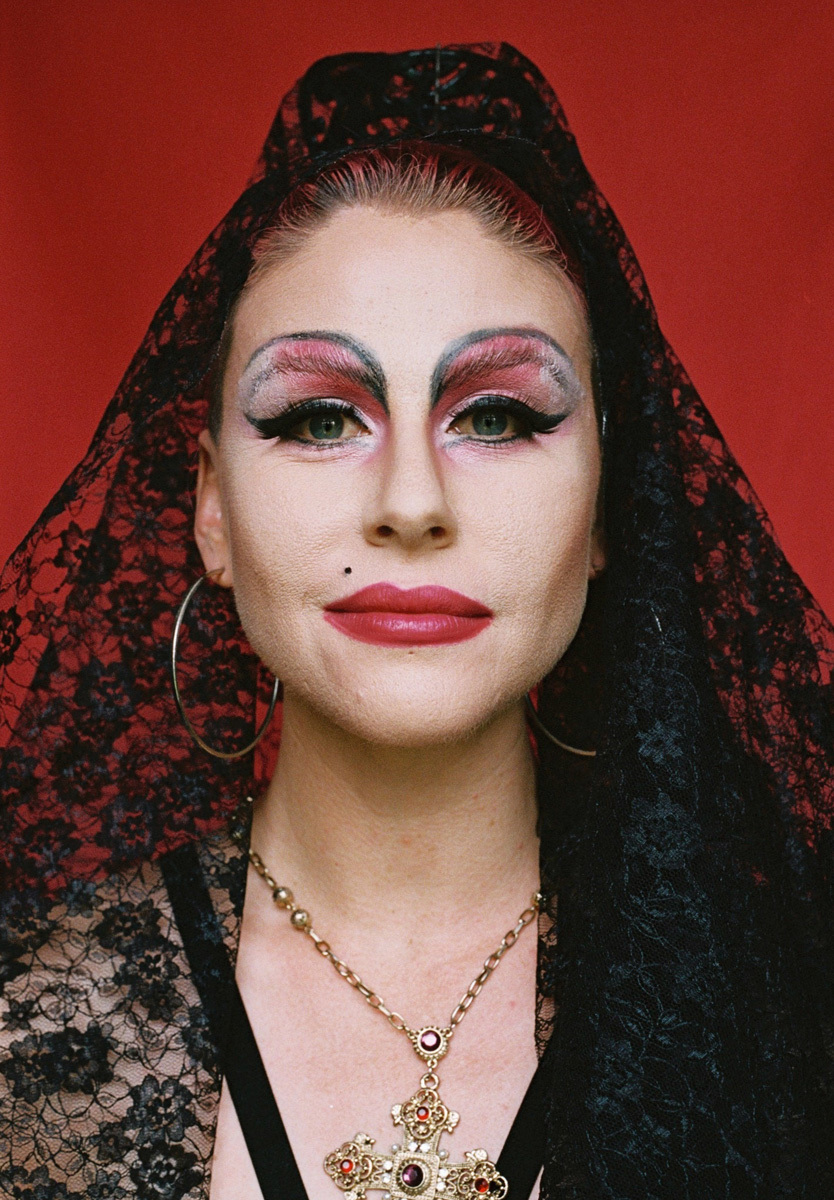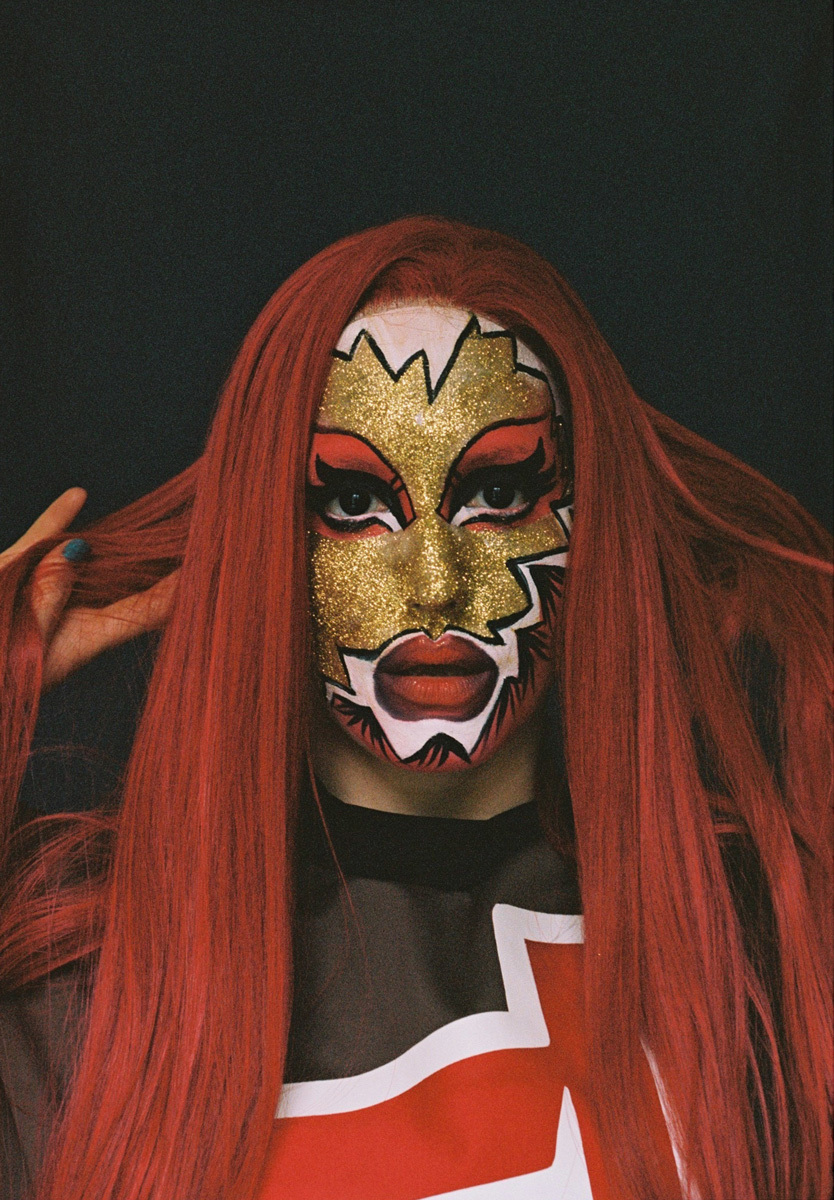Emma Kroeger, aka Edith Pilaf
How did you arrive at your drag character, Edith Pilaf? Edith Pilaf was born out of the Lipsync1000 competition at The Glory. It was the first time I had ever performed; I loved it so much, I was hooked. Do you feel like you are reclaiming extreme femininity with your drag alter ego? Every time I dress up in drag, it has a different relationship to ideas of gender, femininity, and the body. Sometimes I am an extreme exaggeration of society’s ideas of femininity, and sometimes I’m a genderless clown-like character. Drag has the power to state so much about the gender binary, and to draw attention to how ridiculous the imposition of gendered ideas is. Do you have any advice for cis female girls curious about creating a drag persona? As a woman, being a drag queen is so empowering. All of the bullshit shame and self-consciousness that is enforced on female bodies just falls away, and you become this incredible exaggerated embodiment of confidence and power. Drag is such a personal art form, it is truly empowering to find your own niche.

Victoria Sin
How do you approach drag? For me, drag is a tool that we can use to play with the constructed nature of gender in society. For many, people a drag queen is someone who is pretending to be a woman. As a woman of color parodying images of white femininity, I am trying to work through ideas that were policed on my body growing up. Who is your role model? Amanda Lepore. What part of your look has been the most challenging to create? Developing my face has taken the longest. I’m aiming for somewhere between Marilyn Monroe, Marlene Dietrich, and Jessica Rabbit. I’m always looking to make my look more outrageous, glamorous, and captivating. Community is important to you. How does yours support you? The majority of queer spaces are dominated by white cisgendered men, we should be mindful that in these environments misogyny, racism and transphobia can go unchecked, and we should be working harder to call out this behavior when we see it. How have you changed the rule book (if there is one)? I have rebelled against the rules of who is allowed to be a drag queen. I’m not the first, though. Holestar was the first drag queen I met who didn’t accept people marginalizing her work. There are many drag gatekeepers who try to police who and what drag is, they should be scared because more and more people are realizing that the best drag has no rules.

Amy Zing, Sink The Pink
How does dressing up empower you? Dressing up is in my soul. It is truly empowering to feel completely at one in a fabulous look when a crowd of excited people are all doing the same. I feel that together we could change the world! How did you create the scene you’re involved with? Out of a sense of something lacking. We would go out to parties that felt a bit serious and judgemental. We wanted to go somewhere we could climb on tables, dress like sexy robots, and dance to pop bangers with like-minded people, so Sink the Pink was born. Today we’re a massive family of 3000 fabulous freaks at London’s Troxy four times a year. The crowd live the message of Sink the Pink: freedom, tolerance, and love. How do you hope to inspire others? By providing a night that says ‘you are invited to come and be as YOU as you can possibly be, and you will be welcomed, celebrated and loved.’ We are passionate about offering a place for like-minded people to come and find themselves, experiment with looks, play with gender, forget about their worries, and stick two fingers up to conforming.

Fanny Minka, Sink the Pink
How are women breaking the mold of traditional drag? Drag has always been a radical, political act and as traditional drag moves more into the mainstream, it has opened up space for more experimentation with it. Female drag queens are just one example of this. Your husband is also a drag queen, do you share looks and tips? I’m so lucky to have a partner who shares so many of the same passions, influences, and friends as me — plus the general need to dress up and party all the time! We’ve been together for nearly eight years and despite having the same interests and an impact on each other’s style, we tend to interpret it in our own way so we don’t have to worry much about looking too similar. How do you think the current scene has empowered you? Unquestioned acceptance and support, which is a very powerful experience.

Eppie Conrad, HausBound
How does drag performance inspire you? Going to a club in drag is like sharing a joke with everyone; if I’m dressed ridiculously I want everyone to laugh at me, and with me. Hopefully it’ll inspire people. So many woman ask me how to get started, but it’s like anything: you just start doing it. You don’t need permission. Where do you find your looks? I did fashion at uni (didn’t we all!) so I can sew and draw. The inspiration for my outfits flowers out of mundane things. Logos and chip bags are my best friends, throw a swear word in and I’m laughing. Girls and boys are creating drag together and exploring new ways of expressing themselves. How do you feel this represents society today? Gender lines are being blurred more and more. In drag your sexuality or gender doesn’t matter, it’s about the look you’re creating for that moment, or the message behind it. At Sink the Pink we say we’re “queering the norm.” The world is fucked right now, politically, but we’re all in this together creatively, having a party and trying to break free of what’s ‘normal’. Boys and girls are always creating things together; in the words of Belinda Carlisle, “we dream the same dream we want the same thing!”
Credits
Text Princess Julia
Photography Ronan McKenzie
Make-up model’s own
